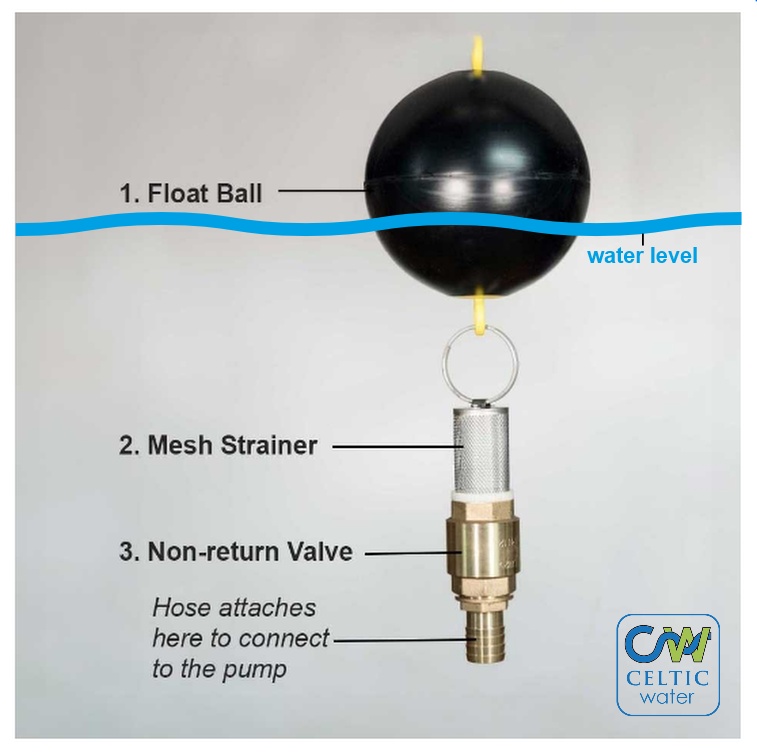Pumps are brilliant for shifting water from A to B, but when they fail, it often leaves you in a real fix. That’s why we’re always in favour of simple precautions that can be taken to prevent this from happening.
Pre-straining water before it enters your pump is a simple, inexpensive measure that not only helps prevent blockages but also avoids unnecessary wear on the pump. This, over time, extends the life of the pump.
For pumps that are installed inside a water tank, a Floating Intake Filter (sometimes called ‘Floating Suction’) is the perfect solution for filtering water before it enters the submersible pump.
Floating Intake Filter

A Floating Intake Filter connects to the submersible pump inlet by a length of hose and comprises of:
- a float ball – to hold the mesh strainer approx. 6” beneath the surface of the water.
- a mesh strainer – to filter out floating particles in the water, preventing them from entering the pump.
- a non-return valve (NRV) - especially important for self-priming pumps - to regulate the flow of water in a single direction and hold pressure within the pump, avoiding unnecessary re-priming or dry running.
In rainwater collection tanks or water holding tanks, debris either floats to the water surface (oil, pollen etc.) or sinks to the bottom of the tank (grit, sand, dirt etc.). The job of the float ball on a floating intake, is to hold the mesh strainer just below the surface of the water, avoiding surface water contaminants and sediment at the bottom of the tank. By doing this, the pump is always taking in water from the cleanest part of the tank.
The mesh strainer filters out small particles of sediment floating around in the water before they can enter the pump. Having the filter floating in this way means that any particles that might otherwise build up on the outside of the filter (known as ‘particle bridging’) are dislodged by its gentle movement in the water. Compare this to a static strainer attached directly to the pump – it’s much more likely to suffer from blockages since it has no means of dislodging any particles as they build up on the surface.
Super simple to install – a floating intake is easily one of the most cost-effective ways to help protect your submersible pump.
More information about the floating intakes we sell can be found on our Floating Intake Filter with or without Hose page.

